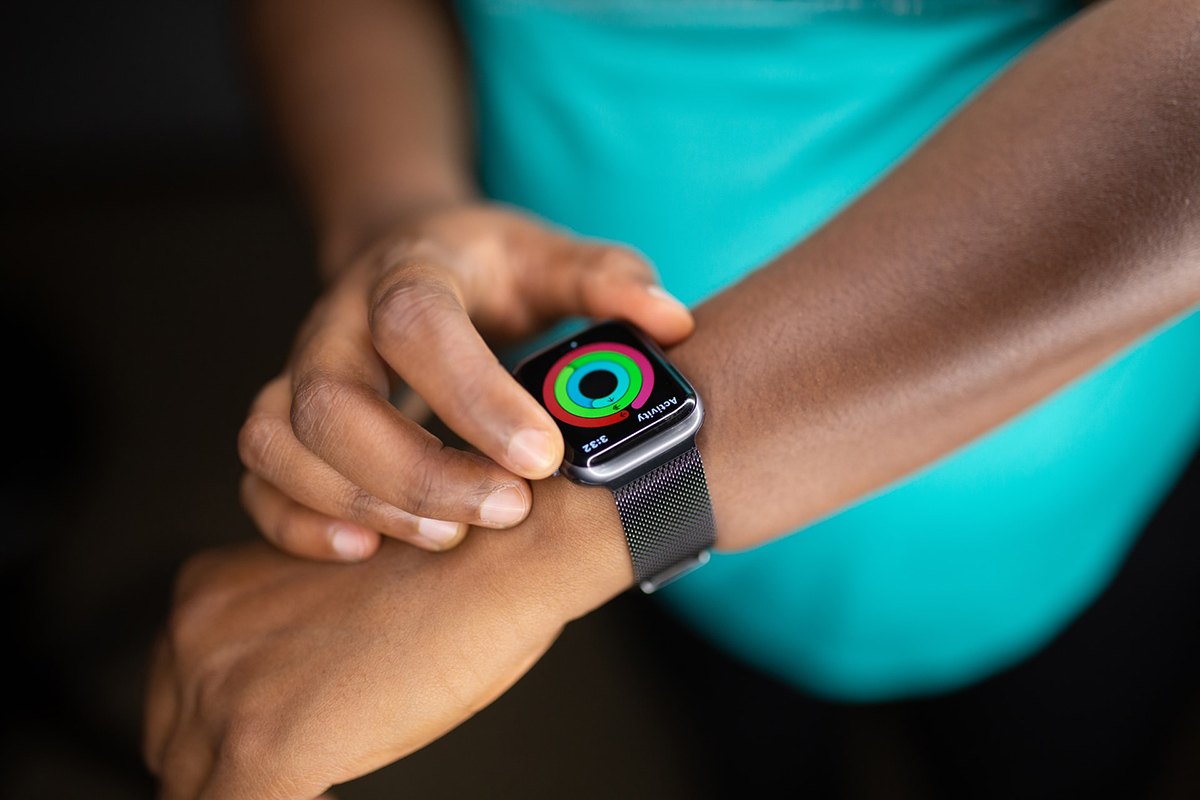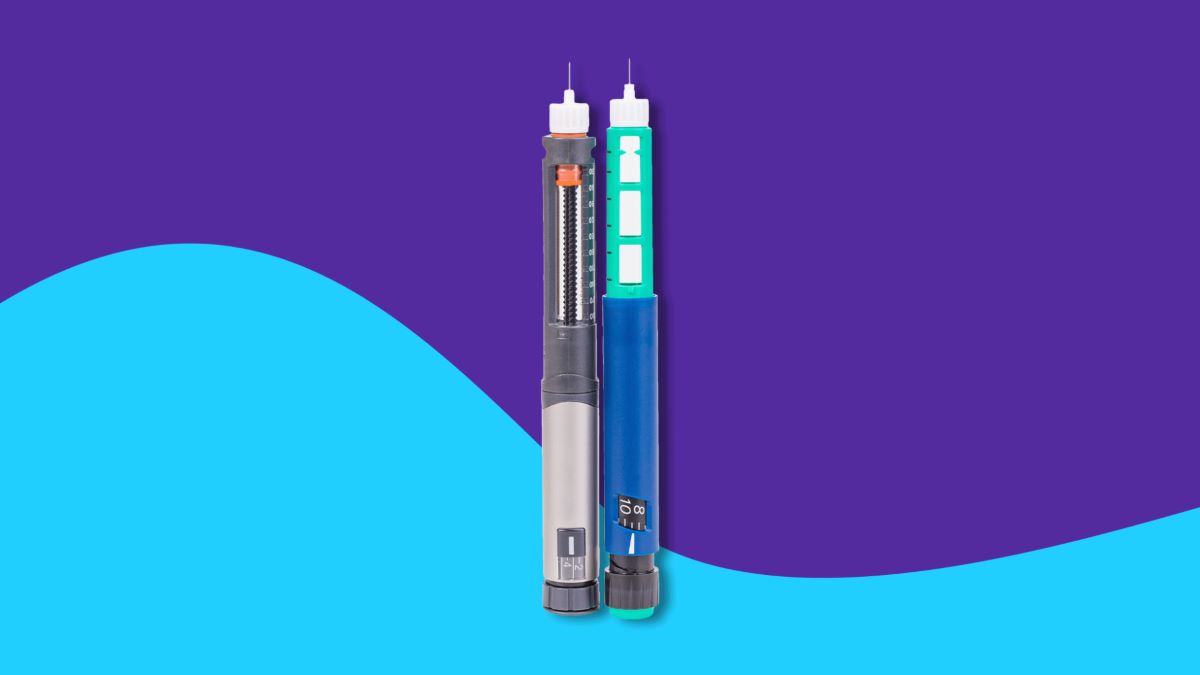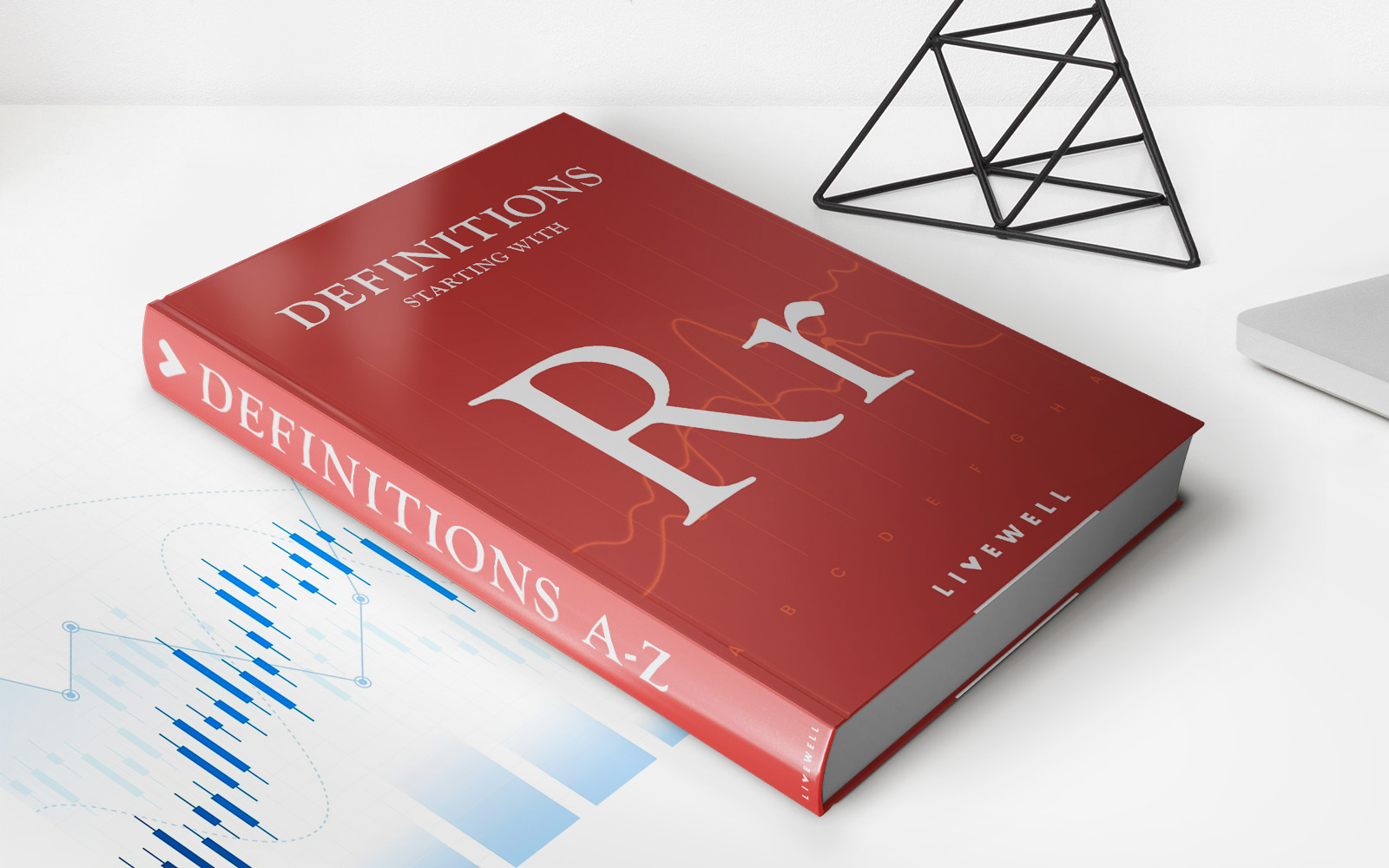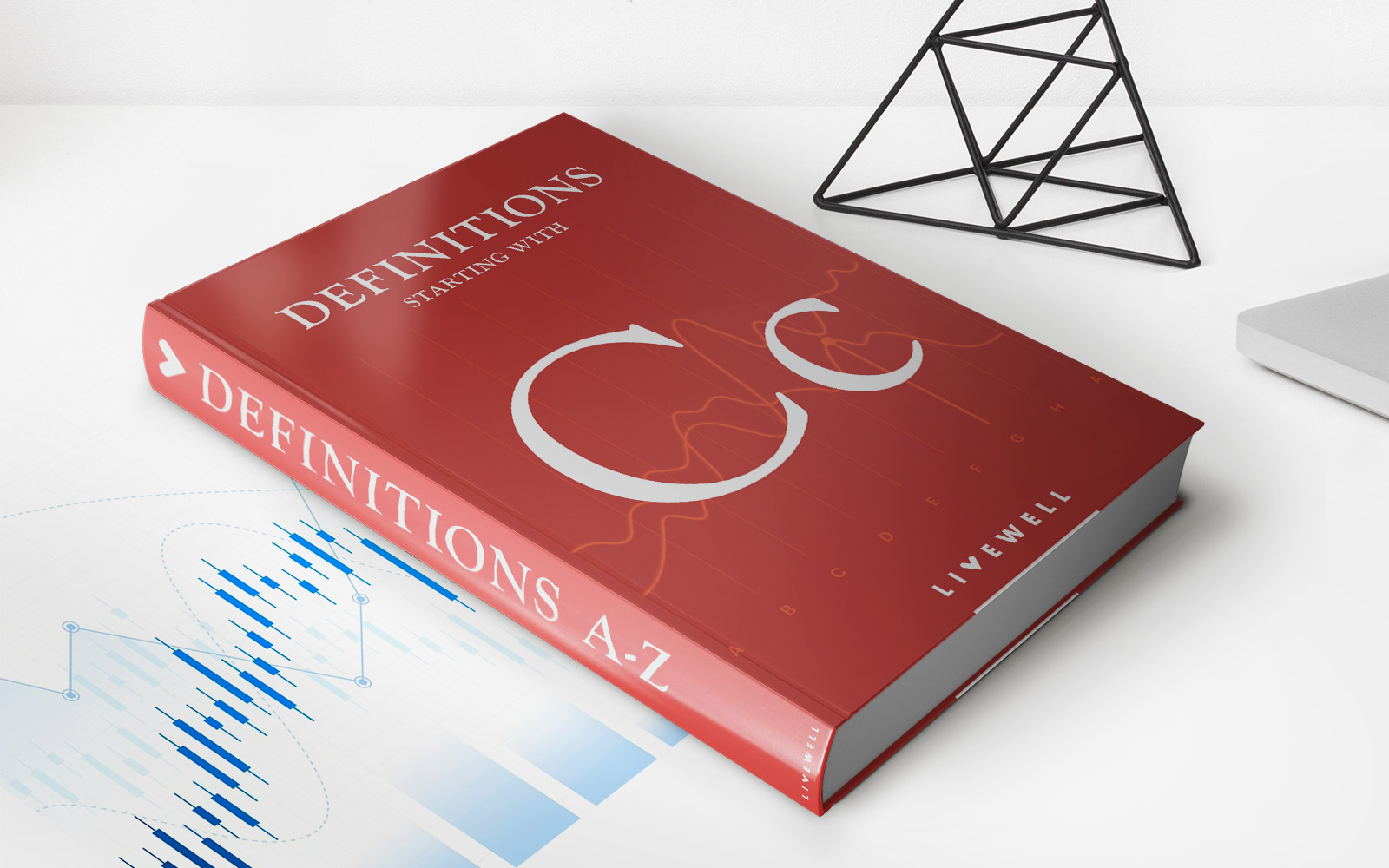

Finance
What Does Watch Insurance Cover
Published: November 22, 2023
Protect your valuable timepieces with watch insurance coverage. Get peace of mind knowing your watches are financially protected. Learn more about watch insurance and finance options today.
(Many of the links in this article redirect to a specific reviewed product. Your purchase of these products through affiliate links helps to generate commission for LiveWell, at no extra cost. Learn more)
Table of Contents
- Introduction
- Definition of Watch Insurance
- Coverage for Theft or Burglary
- Coverage for Accidental Damage
- Coverage for Loss
- Coverage for Mechanical Breakdown
- Coverage for Water Damage
- Coverage for Travel
- Coverage for Vintage or Collectible Watches
- Coverage for Luxury or High-End Watches
- Exclusions and Limitations
- Choosing the Right Watch Insurance
- Conclusion
Introduction
When it comes to protecting your valuable possessions, such as jewelry, it’s essential to have the right insurance coverage in place. This is especially true for high-value items like watches, which can be susceptible to theft, accidental damage, loss, and other unforeseen events. Watch insurance offers peace of mind by providing financial protection against these risks, ensuring that you can repair or replace your cherished timepiece without incurring a significant financial burden.
Watch insurance is a specialized form of coverage designed specifically for watches, whether they are luxury timepieces, vintage models, or everyday wristwatches. It provides coverage for a wide range of perils that can occur to your watch, including theft, burglary, accidental damage, loss, mechanical breakdown, water damage, and more. While the specific coverage options and terms may vary from one insurance provider to another, the fundamental purpose remains the same: safeguarding your watch from potential risks.
In this article, we will explore the various aspects of watch insurance coverage and how it can help protect your valuable timepiece. We will discuss the types of coverage typically offered, including theft or burglary, accidental damage, loss, mechanical breakdown, water damage, and travel coverage. We will also explore specific considerations for vintage or collectible watches, as well as luxury or high-end watches.
However, it’s important to keep in mind that watch insurance, like any insurance policy, may have certain exclusions and limitations. These may include restrictions on coverage for wear and tear, cosmetic damage, or damage caused by improper handling. It’s crucial to thoroughly review the terms and conditions of any watch insurance policy to ensure that it provides the level of coverage you need and aligns with the value and condition of your watch.
With this knowledge in hand, you can make an informed decision when choosing the right watch insurance coverage that suits your needs. By understanding the protection offered and the potential limitations, you can have peace of mind knowing that your treasured timepiece is safeguarded against unforeseen events.
Definition of Watch Insurance
Watch insurance is a specialized form of insurance coverage designed to protect your wristwatch or timepiece against various risks and perils. It provides financial coverage to repair or replace your watch in the event of theft, accidental damage, loss, mechanical breakdown, water damage, and other unforeseen circumstances.
Typically, watch insurance falls under the category of valuable item insurance or jewelry insurance. It offers specific coverage tailored to the unique needs of watches, considering factors such as their value, rarity, and craftsmanship. While some homeowner’s insurance policies may offer limited coverage for watches, they often have limitations, exclusions, or lower coverage limits that may not adequately protect high-value timepieces.
Watch insurance policies typically provide coverage for the following perils:
- Theft or Burglary: Watch insurance covers the loss of your watch due to theft or burglary. This includes situations where the watch is stolen from your home, car, or while you are wearing it in a public place.
- Accidental Damage: Accidents happen, and watch insurance offers coverage for accidental damage to your timepiece. This includes incidents such as drops, impacts, or any other unforeseen events that cause physical damage to your watch.
- Loss: Watch insurance also provides coverage for the loss of your watch. Whether you misplace it or it gets lost during travel, the insurance can help cover the cost of replacing the watch.
- Mechanical Breakdown: In the case of mechanical failure or breakdown of your watch, insurance can cover the cost of repairs or even a replacement, depending on the terms and conditions of the policy.
- Water Damage: Many watch insurance policies offer coverage for water damage, including damage caused by accidental submersion or exposure to moisture. This ensures that your watch is protected even in situations where it comes into contact with water.
It’s important to note that the coverage and terms of watch insurance policies may vary. Some policies may offer comprehensive coverage that includes all of the above perils, while others may have specific limitations or exclusions based on the type, value, or condition of the watch. Understanding the details of your policy is crucial to ensure that you have the appropriate coverage for your specific watch.
Coverage for Theft or Burglary
One of the most significant risks to your watch is theft or burglary. Fortunately, watch insurance provides coverage to help protect you financially in the event of such an unfortunate incident.
Watch insurance policies typically cover the loss of your watch due to theft or burglary. This means that if your watch is stolen from your home, vehicle, or even while you’re wearing it in a public place, you can file a claim with your insurance provider to seek reimbursement for the value of the watch.
In the case of theft or burglary, it’s essential to report the incident to the police as soon as possible. Your insurance provider will likely require a police report to process your claim. Additionally, having documentation of the theft provides additional evidence for your claim and increases the likelihood of a successful reimbursement.
When it comes to coverage for theft or burglary, it’s important to review the terms and conditions of your watch insurance policy. Some policies may have specific requirements, such as mandatory use of a safe or security precautions, to ensure coverage in the event of theft. Failing to comply with these requirements may result in a denied claim.
It’s also worth noting that watch insurance may have coverage limits for theft or burglary. In some cases, there may be a maximum amount that the insurance company will reimburse for a stolen watch. Make sure to understand these limits and ensure that your watch’s value is within the coverage range provided by your policy.
Furthermore, some policies may offer options for additional coverage enhancements for higher-value watches. This can include coverage for watches with values that exceed the standard coverage limits or coverage for watches that are considered rare or unique collectors’ items.
Overall, the coverage for theft or burglary provided by watch insurance offers peace of mind knowing that your valuable timepiece is protected against the unfortunate event of theft. Be sure to thoroughly review your policy and understand the requirements and limits to ensure you have the appropriate coverage for your specific watch.
Coverage for Accidental Damage
Accidents can happen at any time, and your watch is not exempt from the possibility of accidental damage. Fortunately, watch insurance provides coverage to help safeguard you financially in the event of such mishaps.
Watch insurance typically includes coverage for accidental damage to your timepiece. Accidental damage coverage extends to situations where your watch experiences physical harm due to drops, impacts, or any other unforeseen events. Whether you accidentally knock your watch against a hard surface or experience a severe impact that damages the watch’s components, your insurance policy can help cover the cost of repairs or replacement.
When accidental damage occurs, it’s important to contact your insurance provider as soon as possible. They will guide you through the claims process and provide instructions on how to proceed. In many cases, you will need to provide documentation such as photographs of the damaged watch, proof of purchase, and a detailed account of how the damage occurred.
It’s imperative to carefully review the terms and conditions of your watch insurance policy when it comes to coverage for accidental damage. Some policies may have specific limitations or restrictions regarding the circumstances in which the damage is covered. For example, certain policies may exclude coverage for intentional damage or damage caused by improper handling of the watch.
Insurance companies may also have preferred repair services or guidelines for where the watch needs to be repaired. Following these instructions can help ensure a smooth claims process and avoid any potential complications or disputes.
Additionally, it’s important to note that coverage for accidental damage may have certain limits or deductibles. Your policy may specify the maximum coverage amount or require you to pay a deductible before the insurance company provides reimbursement for the repairs or replacement of your watch. Understanding these details will help you manage expectations and make informed decisions.
Overall, watch insurance coverage for accidental damage offers valuable protection against unexpected mishaps. By having the appropriate coverage in place, you can rest assured knowing that your watch is safeguarded and that any necessary repairs or replacements will be taken care of, minimizing the financial impact on you.
Coverage for Loss
One of the most distressing situations that can occur with your watch is the loss of it. Whether you misplace it or it disappears during travel, having coverage for loss through watch insurance can provide you with financial protection and peace of mind.
Watch insurance policies typically offer coverage for the loss of your timepiece. If you find yourself unable to locate your watch or if it goes missing, you can file a claim with your insurance provider to seek reimbursement for its value.
When it comes to coverage for loss, it’s important to carefully review the terms and conditions of your watch insurance policy. Some policies may require you to report the loss within a specified timeframe and provide supporting documentation, such as a police report or a statement detailing the circumstances of the loss. Complying with these requirements and providing the necessary information is crucial to facilitate the claims process.
It’s worth noting that watch insurance coverage for loss may have certain limitations or exclusions. Policies may have maximum coverage limits for lost watches, and they may only cover the current market value of the watch rather than the original purchase price. Understanding these details will help you manage your expectations and ensure that the coverage provided aligns with the value of your watch.
Insurance companies may also have additional requirements for coverage of lost watches, such as taking specific security measures or placing certain restrictions on where and how you wear or store your watch. It’s important to familiarize yourself with these guidelines and follow them to ensure your coverage remains valid.
For individuals who frequently travel or often find themselves in situations where the risk of losing their watch is higher, it’s important to explore insurance policies that offer coverage for loss during travel. These policies can provide extra protection and peace of mind knowing that your watch is covered even when you’re away from home.
Overall, watch insurance coverage for loss can help ease the financial burden in the unfortunate event that your watch goes missing. By understanding the terms and conditions of your policy and complying with any requirements, you can ensure that you have the appropriate coverage and be prepared if you ever need to file a claim for a lost watch.
Coverage for Mechanical Breakdown
While watches are intricate mechanical devices built with precision, they are not immune to mechanical failures or breakdowns. Fortunately, watch insurance provides coverage for mechanical breakdown, ensuring that you are protected if your timepiece experiences such issues.
Watch insurance policies generally include coverage for mechanical breakdown, which refers to the failure of the watch’s internal mechanisms. This can include issues with the movement, complications, or other components that affect the watch’s ability to function properly.
In the event of a mechanical breakdown, you can file a claim with your insurance provider to seek coverage for the repairs or even a replacement watch, depending on the specific terms and conditions of your policy. It’s important to contact your insurance company as soon as you become aware of the issue so that they can guide you through the claims process.
When it comes to coverage for mechanical breakdown, it’s essential to review your watch insurance policy to understand the extent of the coverage provided. Some policies may have specific limitations on the types of mechanical failures that are covered or exclusions for certain types of watches.
Insurance companies may also have preferred repair services or guidelines for where the watch should be repaired. It is advisable to follow these instructions to ensure that your claim is processed smoothly and efficiently.
It’s worth noting that watch insurance coverage for mechanical breakdown may have certain exclusions or waiting periods. Some policies may exclude coverage for wear and tear or the gradual deterioration of the watch over time. Additionally, there may be a waiting period before coverage for mechanical breakdown takes effect, typically to ensure that the watch was in good working condition at the time the policy was issued.
Furthermore, some policies may offer enhanced coverage options for higher-value watches or watches deemed rare or collectible. These options may provide coverage for specialized repairs or replacement parts to maintain the value and authenticity of the watch.
Overall, coverage for mechanical breakdown provided by watch insurance offers valuable protection against unexpected issues with your timepiece. By having the appropriate coverage in place, you can ensure that any required repairs or replacements are taken care of, allowing you to continue enjoying your watch for years to come.
Coverage for Water Damage
Accidental exposure to water is a common risk that watches face, and it can cause significant damage to their delicate internal components. Fortunately, watch insurance provides coverage for water damage, ensuring that you are financially protected if your timepiece comes into contact with water.
Watch insurance policies typically include coverage for water damage, which encompasses various situations where your watch gets exposed to moisture, such as accidental submersion, water splashes, or even damage caused by environmental conditions like high humidity.
In the event of water damage, you can file a claim with your insurance provider to seek coverage for the necessary repairs or even a replacement watch, depending on the terms and conditions of your policy. It’s essential to contact your insurance company as soon as possible after the incident occurs to initiate the claims process.
When it comes to coverage for water damage, it’s important to review your watch insurance policy to understand the specifics of the coverage provided. Some policies may require that certain precautions be taken to protect your watch from water damage, such as ensuring it has a certain water resistance rating or not exposing it to excessive moisture in specific situations.
Insurance policies may also specify their preferred repair services or guidelines for where the watch should be repaired in the event of water damage. Following these instructions can help ensure a smooth claims process and prevent any potential disputes or complications.
However, it’s important to note that watch insurance coverage for water damage may have certain limitations or exclusions. Some policies may exclude coverage for damage caused by deliberately submerging the watch in water or by exposure to liquids other than water. Additionally, there may be limitations on the maximum coverage amount for water damage or the necessity of proof that you have taken appropriate care to prevent water damage.
Furthermore, it’s worth considering that coverage for water damage may differ for watches with different water resistance ratings. Higher-end watches or those specifically designed for diving may have different coverage terms compared to standard wristwatches. It’s crucial to review your policy to understand the level of protection offered based on the water resistance rating of your watch.
Overall, coverage for water damage provided by watch insurance offers peace of mind in safeguarding your timepiece against the unexpected contact with moisture. By having the appropriate coverage in place, you can be confident that your watch is protected, and any necessary repairs or replacements will be taken care of, minimizing the financial impact on you.
Coverage for Travel
Traveling with your watch can expose it to a wide range of risks, including theft, loss, accidental damage, and more. To provide added protection, watch insurance often includes coverage specifically tailored for travel-related incidents.
Watch insurance policies may offer coverage for travel, ensuring that your timepiece is protected during your journeys. Whether you’re traveling domestically or internationally, your watch is covered against risks that may arise during transit or while you’re in a different location.
When it comes to travel coverage, it’s important to review the terms and conditions of your watch insurance policy. Some policies may have specific requirements or conditions that need to be met to ensure coverage while traveling. For example, the policy may require you to notify the insurance company in advance of your travel plans or provide documentation such as proof of travel itinerary or hotel reservations.
Depending on the policy, travel coverage may include protection against theft, loss, accidental damage, and mechanical breakdowns that may occur while you’re away from home. This means that if your watch is stolen from your hotel room or lost during transit, you may be eligible to file a claim and receive financial compensation.
In addition to coverage for theft, loss, and damage, travel coverage may also extend to other travel-related benefits. This can include reimbursement for emergency expenses incurred while trying to recover a lost or stolen watch, such as travel expenses or temporary replacement watch costs.
It’s important to note that the coverage and limits for travel-related incidents may vary among insurance providers. Some policies may provide comprehensive coverage both domestically and internationally, while others may have specific limitations based on the destination and duration of travel. Familiarizing yourself with the specifics of your policy will enable you to understand the level of protection provided while traveling.
When traveling with your watch, take necessary precautions to protect it, such as using hotel safes, carrying it in a secure travel case, or ensuring it is kept on your person at all times. Following these precautions may not only help prevent incidents but also strengthen your claim should you need to file one.
Having coverage for travel through watch insurance gives you peace of mind during your adventures, knowing that your treasured timepiece is protected from unforeseen events. By understanding the travel coverage offered in your policy, you can enjoy your travels while keeping your watch safe.
Coverage for Vintage or Collectible Watches
Vintage or collectible watches hold a special place in the hearts of watch enthusiasts, often carrying significant historical, sentimental, and monetary value. Recognizing the unique nature of these timepieces, watch insurance policies may offer specialized coverage tailored specifically for vintage or collectible watches.
Coverage for vintage or collectible watches aims to protect these unique timepieces against risks such as theft, accidental damage, loss, and other unforeseen events. Insurance companies understand the importance of preserving the heritage and value of these watches and provide coverage options that take into account their distinct characteristics.
When it comes to coverage for vintage or collectible watches, it’s important to review the terms and conditions of your watch insurance policy. Some policies may require additional documentation to establish the value and authenticity of the watch, such as appraisals, provenance information, or certifications from reputable watch experts.
An important aspect of coverage for vintage or collectible watches is adequate valuation. Standard coverage limits may not fully account for the unique value of these timepieces, which can appreciate over time. It’s essential to evaluate your policy and ensure that your vintage or collectible watch is insured for its current market value.
Insurance policies for vintage or collectible watches may also provide coverage for restoration, repair, or replacement by experienced and qualified watchmakers who specialize in handling these types of timepieces. This ensures that any necessary repairs or restoration work is done with the utmost care to preserve the watch’s authenticity and value.
In addition to the coverage extended to standard watch insurance, policies for vintage or collectible watches may offer superior protection tailored to the unique risks they face. This can include coverage for damage caused by the aging of parts, coverage for loss of value in case of damage, and even coverage for the appreciation in value of the watch over time.
It’s important to note that coverage for vintage or collectible watches may also come with certain restrictions or conditions. Insurance policies may require specific security measures, such as secure storage or limited wearing of the watch, to ensure continued coverage for these valuable timepieces.
Obtaining the right insurance coverage for your vintage or collectible watch is crucial in protecting its value and preserving its historical significance. By understanding and selecting a policy that offers specialized coverage for vintage or collectible watches, you can have peace of mind knowing that your treasured timepiece is safeguarded against the unique risks it may face.
Coverage for Luxury or High-End Watches
Luxury or high-end watches are prized possessions, often representing significant investments in craftsmanship, technology, and brand reputation. Given their elevated value, watch insurance policies offer specialized coverage tailored specifically for luxury or high-end watches.
Coverage for luxury or high-end watches aims to provide comprehensive protection for these valuable timepieces against a range of risks, including theft, accidental damage, loss, and more.
When it comes to coverage for luxury or high-end watches, it’s crucial to thoroughly review the terms and conditions of your watch insurance policy. Some policies may require additional documentation, such as proof of purchase or a detailed description of the watch’s specifications and features. This information helps establish the watch’s value and authenticity, which is vital for ensuring accurate coverage.
Insurance coverage for luxury or high-end watches typically includes coverage for theft, providing financial protection in the event of a stolen watch. Additionally, coverage extends to accidental damage, covering repairs or replacement if your watch suffers physical harm due to unforeseen events.
Loss coverage is also an important aspect of insurance for luxury or high-end watches. If your watch goes missing, whether it’s misplaced or lost during travel, your insurance policy can provide reimbursement for the value of the watch.
Mechanical breakdown coverage may be particularly valuable for luxury or high-end watches, as these timepieces often feature intricate movements and complications. If your watch experiences mechanical failure or breakdown, your insurance can cover the cost of repairs or even replacement, depending on the terms of your policy.
Water damage coverage is especially relevant for luxury or high-end watches, as many of these watches possess various levels of water resistance. Insurance policies can provide coverage for damages caused by accidental submersion or exposure to moisture, ensuring that your watch remains protected.
Furthermore, insurance coverage for luxury or high-end watches may include coverage for specialized repairs or restoration by skilled watchmakers who are knowledgeable in servicing these intricately designed timepieces. This ensures that the value and integrity of your luxury watch are maintained throughout the repair process.
It’s important to note that coverage for luxury or high-end watches may have certain restrictions or requirements. Insurance companies may have specific security measures that need to be followed, such as using safes or implementing alarm systems, to ensure continued coverage for these valuable timepieces.
By obtaining watch insurance coverage specifically designed for luxury or high-end watches, you can have peace of mind knowing that your prized possession is adequately protected. Understanding the details of your policy and selecting the appropriate coverage will provide financial security and preserve the value of your prestigious timepiece.
Exclusions and Limitations
While watch insurance provides valuable coverage against a variety of risks, it’s important to be aware of the exclusions and limitations that may apply to your policy. Understanding these exclusions and limitations will help you set realistic expectations and ensure that you have the appropriate coverage for your watch.
Exclusions refer to the circumstances or events that are not covered by your watch insurance policy. These can vary between different insurance providers and policies. Some common exclusions found in watch insurance policies include:
- Wear and Tear: Most policies do not cover damages resulting from normal wear and tear or the gradual deterioration of the watch over time.
- Intentional Damage: Deliberate acts that result in damage to the watch, such as purposely dropping it or causing it harm, are typically excluded from coverage.
- Cosmetic Damage: Some policies may exclude coverage for purely cosmetic damages, such as scratches or scuffs on the watch’s exterior.
- Improper Handling: If the watch is damaged due to improper use or mishandling, it may not be covered by the insurance policy.
- Unspecified Locations: Certain policies may have limitations on coverage if the watch is not stored or used in specific approved locations mentioned in the policy.
Limitations, on the other hand, define the maximum amount of coverage or specific conditions within your policy. These limitations can include:
- Maximum Coverage Amount: Your policy may have a maximum coverage limit that the insurance company will reimburse in the event of a claim. Ensure your watch’s value falls within this coverage range.
- Deductibles: Many insurance policies have a deductible, which is the amount you must pay out of pocket before the insurance coverage kicks in. Understand the deductible amount and how it impacts your claim settlements.
- Waiting Periods: Some policies have waiting periods before coverage for certain events takes effect. For example, there may be a waiting period before coverage for mechanical breakdowns applies.
- Sub-limits: Certain types of coverage, such as coverage for specific perils or high-value items, may have sub-limits that impose coverage limits within the overall policy limits.
Reviewing the exclusions and limitations of your watch insurance policy is crucial to ensure you have a complete understanding of your coverage. It’s vital to be proactive in seeking clarification from your insurance provider if you have any questions or concerns regarding these details.
By understanding the exclusions and limitations, you can make informed decisions about the level of protection you need for your watch and take necessary precautions to minimize risks that may not be covered by your policy. It’s also important to periodically review and reassess your insurance coverage to ensure it aligns with your watch’s current value and your specific needs.
Choosing the Right Watch Insurance
Choosing the right watch insurance is crucial to ensuring that your cherished timepiece is adequately protected. With numerous insurance providers and policies available, it’s important to consider several factors before making your decision.
Research and Compare: Take the time to research and compare different watch insurance providers. Look for reputable companies with a track record of excellent customer service and reliable claims handling. Read reviews and seek recommendations from other watch enthusiasts or experts.
Coverage Options: Evaluate the coverage options offered by each insurance policy. Consider the specific risks you want to protect against, such as theft, accidental damage, loss, mechanical breakdown, water damage, or travel-related incidents. Ensure that the policy you choose provides coverage tailored to your needs.
Policy Limitations and Exclusions: Carefully review the limitations and exclusions within the policy. Ensure that you understand any restrictions in coverage, such as wear and tear, intentional damage, or certain geographical limitations. Assess how these limitations may impact the coverage for your specific watch.
Valuation and Agreed Value Coverage: Determine how the insurance company values your watch. Some policies offer “agreed value” coverage, where the value of the watch is determined and agreed upon upfront. This ensures that you are reimbursed for the agreed value in the event of a covered claim.
Premiums and Deductibles: Consider the cost of premiums and deductibles associated with each policy. While it’s important to evaluate affordability, don’t base your decision solely on price. Balance the cost with the level of coverage, reputation of the insurance provider, and the value of your watch.
Policy Terms and Conditions: Thoroughly read the terms and conditions of the policy to understand the fine print. Look for specific requirements or conditions, such as security measures for protection, notification timelines for claims, and guidelines for repairs or replacements.
Customer Support and Claims Process: Assess the quality of customer support and the efficiency of the claims process. Read reviews or speak to other customers to get insights into the speed and reliability of claims settlements. Prompt and hassle-free claims handling is crucial in times of adversity.
Professional Appraisals and Documentation: Consider obtaining a professional appraisal of your watch to establish its value and authenticity. This documentation can strengthen your claim and ensure accurate coverage. Discuss with the insurance provider if they require specific documentation before providing coverage.
Flexibility and Customization: Look for insurance policies that offer flexibility and allow for customization. Your watch collection may change or grow over time, so having the ability to add or modify coverage as needed is essential.
Taking the time to thoroughly research and evaluate different watch insurance options will help you make an informed decision. Remember, each watch is unique, and the coverage you choose should align with its value, condition, and your specific needs. By selecting the right watch insurance, you can have peace of mind, knowing that your treasured timepiece is protected against unexpected events.
Conclusion
Watch insurance provides valuable protection for your cherished timepieces, ensuring that they are safeguarded against risks such as theft, accidental damage, loss, mechanical breakdown, water damage, and more. Owning a watch, whether it’s a luxury, vintage, or high-end piece, comes with the responsibility of preserving its value and safeguarding it against unforeseen events.
By understanding the coverage options, exclusions, and limitations of watch insurance policies, you can make an informed decision and select the right coverage for your specific needs. Thoroughly assess the risks your watch may face and choose a policy that offers comprehensive protection against those risks.
When choosing watch insurance, research and compare various providers and policies, taking into consideration factors such as coverage options, policy limitations, valuation methods, premiums, and customer support. It’s important to find a reputable insurance provider that offers reliable claims handling and exceptional customer service.
Remember to review and reassess your watch insurance periodically, especially as the value of your timepiece may change over time. Update your policy as needed and ensure that your coverage remains adequate and up to date.
Ultimately, watch insurance provides you with peace of mind, knowing that your cherished timepiece is protected. It allows you to wear and enjoy your watch without constant worry about potential risks. With the right insurance coverage in place, you can rest easy knowing that if anything unfortunate happens to your watch, you have the financial support to repair or replace it.
Investing in watch insurance is a responsible decision for any watch owner who wishes to preserve the value and sentimental significance of their timepieces. By taking the time to research, understand policy terms, and choose the right coverage, you can enjoy your watch collection with confidence, knowing that you have taken the necessary steps to protect your valuable possessions.














